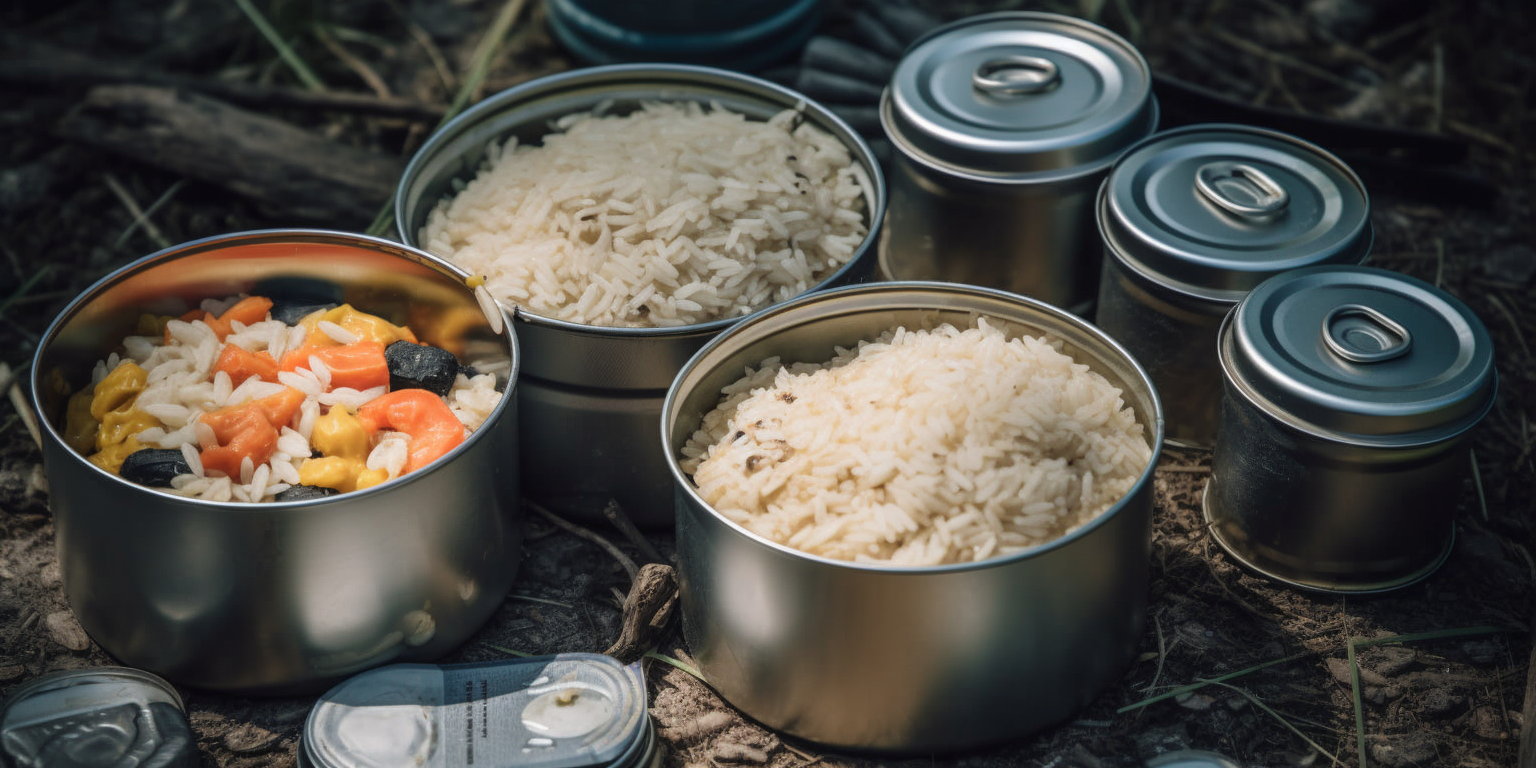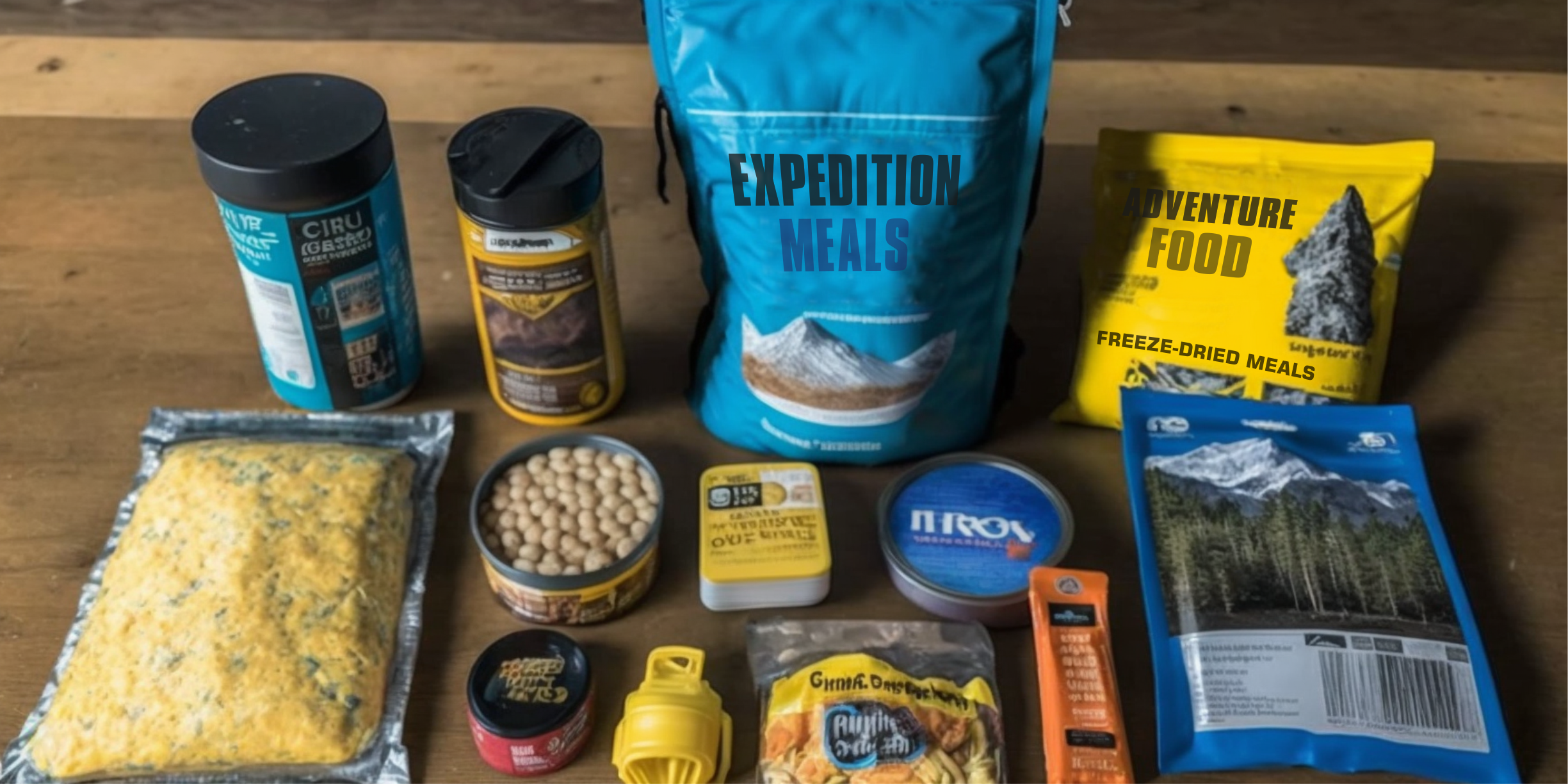
Understanding Food Allergies and Dietary Restrictions in Emergency Situations
Understanding Food Allergies and Dietary Restrictions in Emergency Situations
According to Allergy UK, around 2 million people in the UK have a diagnosed food allergy, and up to 20 million people have an allergy of some kind.
When emergencies happen, such as natural disasters or prolonged power outages, it's important to have emergency food supplies on hand. However, for people with food allergies or dietary restrictions, finding safe and suitable food can be challenging. In this article, we'll discuss common food allergies and their potential impact on emergency situations, strategies for managing food allergies and dietary restrictions, tips for creating personalized emergency food kits, and the benefits of choosing allergen-free and specialized dietary products.
Common food allergies and their potential impact on emergency situations
Food allergies are an immune system response to certain proteins in food. In severe cases, exposure to allergens can cause life-threatening reactions such as anaphylaxis. Some of the most common food allergens include peanuts, milk, eggs, wheat, and shellfish.
There are 14 major allergens which suppliers are obligated to mention either on food packaging or menus or other associated information when they are used as ingredients in a food. These allergens are:
- Celery: Celery stalks, leaves, seeds, and the root called celeriac can be found in salads, soups, some meat products, and stock cubes, as well as in celery salt.
- Cereals containing gluten: Wheat, including spelt and Khorasan wheat, as well as rye, barley, and oats are commonly found in flour-based foods, such as bread, cakes, pasta, and pastries, as well as in sauces, soups, and fried foods coated with flour.
- Crustaceans: Crabs, lobster, prawns, and scampi are crustaceans, while shrimp paste is often used in Thai and Southeast Asian curries or salads.
- Eggs: Cakes, some meat products, mayonnaise, mousses, pasta, quiche, sauces, and pastries often contain eggs, as well as foods brushed or glazed with egg.
- Fish: Fish can be found in fish sauces, pizzas, relishes, salad dressings, stock cubes, and Worcestershire sauce.
- Lupin: Lupin flour and seeds can be used in some bread, pastries, and pasta.
- Milk: Butter, cheese, cream, milk powders, and yogurt often contain milk, as well as foods brushed or glazed with milk and powdered soups and sauces.
- Molluscs: Mussels, land snails, squid, and whelks are molluscs, and can also be found in oyster sauce or as an ingredient in fish stews.
- Mustard: Liquid mustard, mustard powder, and mustard seeds are included in this category, and can also be found in bread, curries, marinades, meat products, salad dressings, sauces, and soups.
- Nuts: Tree nuts, such as cashews, almonds, and hazelnuts, can be found in desserts, ice cream, nut powders, stir-fried dishes, and sauces, as well as in breads, biscuits, and crackers.
- Peanuts: Peanuts are a legume that grow underground and can be found in biscuits, cakes, curries, desserts, peanut flour, groundnut oil, and sauces such as satay sauce.
- Sesame seeds: Sesame seeds are often used in bread, breadsticks, humous, sesame oil, and tahini, and can also be toasted and used in salads.
- Soya: Soya is a staple ingredient in oriental food, and can be found in bean curd, edamame beans, miso paste, textured soya protein, soya flour, tofu, desserts, ice cream, meat products, sauces, and vegetarian products.
- Sulphur dioxide: Dried fruit such as raisins, dried apricots, and prunes, as well as meat products, soft drinks, vegetables, wine, and beer, may contain sulphur dioxide, which poses a higher risk for individuals with asthma.
Despite legal requirements, the Food Standards Agency (FSA) reports that in 2018, there were 1,675 food allergy incidents reported in the UK, and the most common allergens involved were peanuts, tree nuts, and milk. For people with food allergies, emergency situations can pose a significant risk. In the aftermath of a disaster, emergency food supplies may be limited, and cross-contamination may occur between allergens and non-allergen foods. It's crucial to be prepared and plan ahead to manage food allergies and dietary restrictions during emergency situations.
Strategies for managing food allergies and dietary restrictions in emergency situations
One of the best strategies for managing food allergies and dietary restrictions during emergencies is to plan ahead. Individuals with food allergies should always have an emergency food kit on hand that includes safe, non-perishable foods. These foods should be clearly labelled, and the expiration dates should be checked regularly. When preparing emergency food kits, it's essential to avoid allergens and cross-contact with other foods. Additionally, it's important to communicate any food allergies or dietary restrictions to emergency responders, such as the Red Cross, so that they can provide appropriate assistance.
Tips for creating personalized emergency food kits for individuals with dietary restrictions
When creating personalized emergency food kits for individuals with dietary restrictions, it's important to choose non-perishable foods that are safe and suitable for their specific needs. For example, people with nut allergies should avoid trail mix and granola bars that contain nuts. People with celiac disease should avoid foods that contain gluten, such as bread, crackers, and pasta. Some examples of safe, non-perishable foods for people with food allergies and dietary restrictions include canned fruits and vegetables, rice cakes, popcorn, dried fruit, and jerky. It's also important to consider any food preferences or dietary restrictions, such as vegan or kosher diets, when creating personalized emergency food kits.
The benefits of choosing allergen-free and specialized dietary products for emergency food supplies
Choosing allergen-free and specialized dietary products for emergency food supplies can provide peace of mind and help manage food allergies and dietary restrictions. Many companies offer allergen-free and specialized dietary products, such as gluten-free pasta, nut-free trail mix, and dairy-free powdered milk.
In conclusion, managing food allergies and dietary restrictions during emergency situations is critical. During an emergency it is not uncommon for standard procedures, checks and balances to breakdown as other more urgent issues are prioritised - and this can result in food labelling mistakes, failures to communicate allergen issues and cross-contamination. By planning ahead, creating personalized emergency food kits, and choosing allergen-free and specialized dietary products, individuals with food allergies and dietary restrictions can be prepared and stay safe during emergencies. Remember to communicate any food allergies or dietary restrictions to emergency responders, and check expiration dates regularly to ensure that emergency food supplies are safe and suitable for consumption.
Suggested Articles
Cooking with Freeze-Dried Foods: Creative Recipes for Camping and Emergency Situations
Freeze-dried foods have revolutionized the way we approach cooking in outdoor and emergency scenarios. These lightwei...
How to Plan Nutritious and Delicious Meals for Multi-Day Expeditions
Embarking on a multi-day expedition requires a lot of physical effort, and proper nutrition is key to ensure that you...
Meal Planning for Extended Outdoor Adventures
For those who enjoy longer camping or backpacking trips, meal planning is an essential part of the preparation proces...




